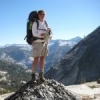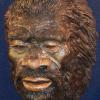Here's what I sometimes think about...on the subject of tracking, reading sign and woodcraft in general:
I don't believe that at one not-so-distant time we were a civilization of Daniel Boones, reading the ground like a book, picking up data at a glance to know the shape, size, gait, and mood of every animal that made tracks. Like most things I'm sure, some were better than others at it, and some were not good at it at all. Some even did achieve mythical status for their abilities. Like most learned skills , they were passed one generation to the other, and honed through repeated use. Rural populations were proportionally larger on comparison to urban ones, and more people earned their livings out of doors. I think this probably resulted in a much higher level of attention the average person (hunter or not) paid to their usual surroundings in general.
Very few would dispute this, but maybe some have not thought too much about the degree the diminishment of these skills have kept us mired in uncertainty at the very point in human history when our ability to share information is at its zenith. My perfect scenario for Sasquatch field studies is a population with THAT level of outdoor situational awareness AND with crazy technological skills. We may have had tons of practical Sasquatch knowledge in centuries past, but we had no way to really share it with too many others. We see hints of it here and there...old newspaper blurbs, tribal stories, etc. Now we have speed of light, universal data sharing capabilities, but the comparative ability of many to to perceive what is actually going on around them is so degraded I'm not sure we've gained any ground. We may very well have lost some. I will concede the skeptics' point that this marriage of diminished capacity & technology can result in lots of confused people and garbled conclusions.
Then of course there is evidence like the snow tracks documented in the video above. Some things are just "hit you on the head" obvious, and it took no Daniel Boone to get that. The shame is, think what a killer video an expert tracker or woodsman of that caliber could have narrated?! What was missed, if only the person had had the skill to see it?



